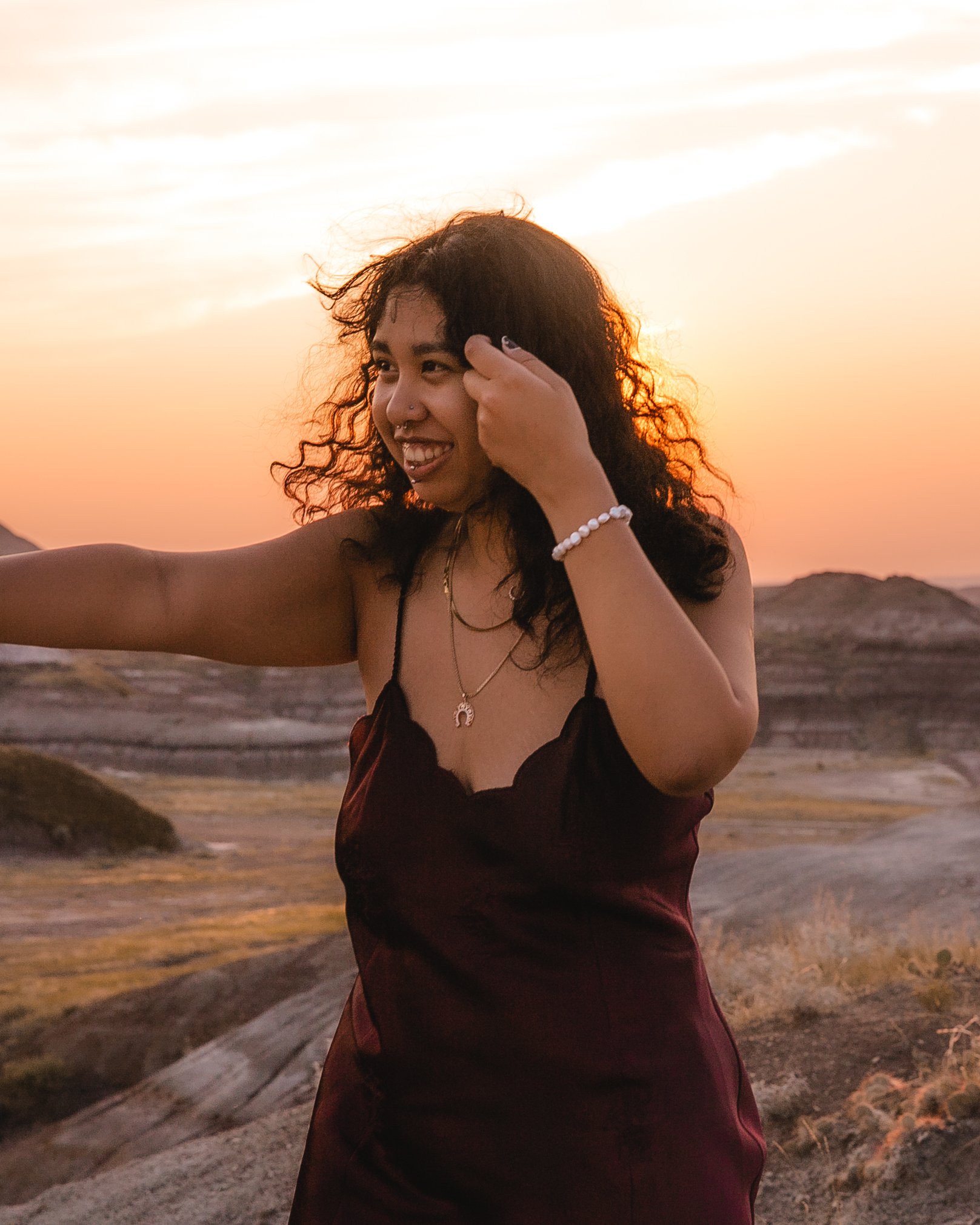In the badlands of Alberta, where the earth folds into ancient scars and the wind speaks in the tongues of stone and silence, she danced.
Alone on a rise of crumbling shale, her bare feet kissed the dust that had not shifted in a hundred years. Beneath her, the bones of long-dead giants—creatures of claw and tooth and thunder—lay buried in the quiet earth, their stories pressed between layers of time. Fossils, forgotten but watching.
She wore a maroon dress that moved like blood in water—rich, deep, restless. Her dark curls tangled in the wind, wild as the land itself. She was not lost, nor found. She simply was: a flicker of life atop a graveyard of ages.
The sunset came low and wide, spilling molten gold across the ragged hoodoos and sagebrush, drenching everything in warmth that would not last. It poured over her skin, gilded her hair, wrapped her in a light that seemed both sacred and sorrowful. The land glowed, and she with it.
And then she moved.
A slow turn. A lifting of arms. Her body followed rhythms that were older than music, older than memory. The dust rose around her in little swirls, like the ghosts of storms long gone. Every step was a defiance of stillness, every movement a promise: that even here, in this brittle cradle of death and silence, life could still burn—brief and beautiful.



